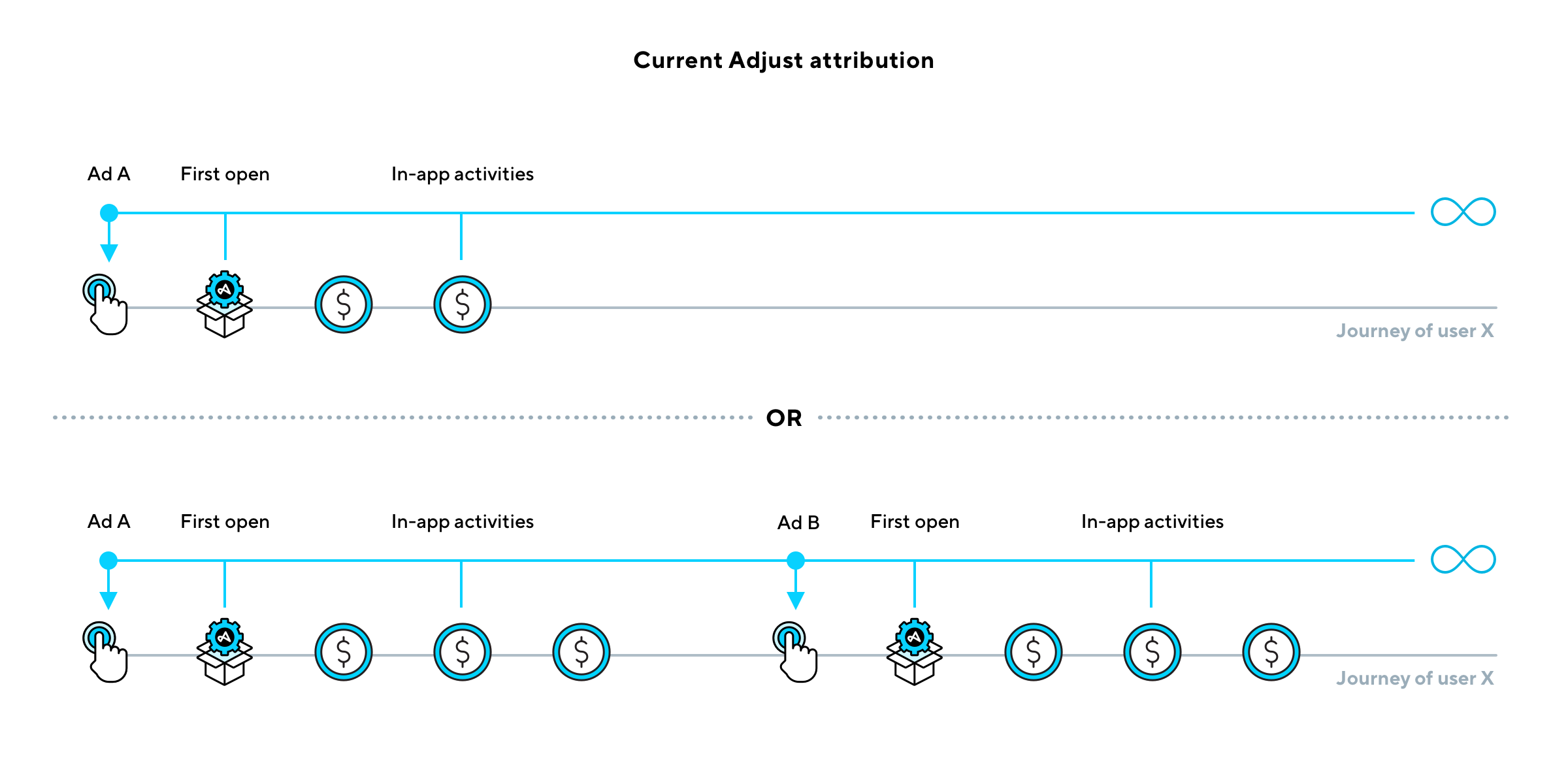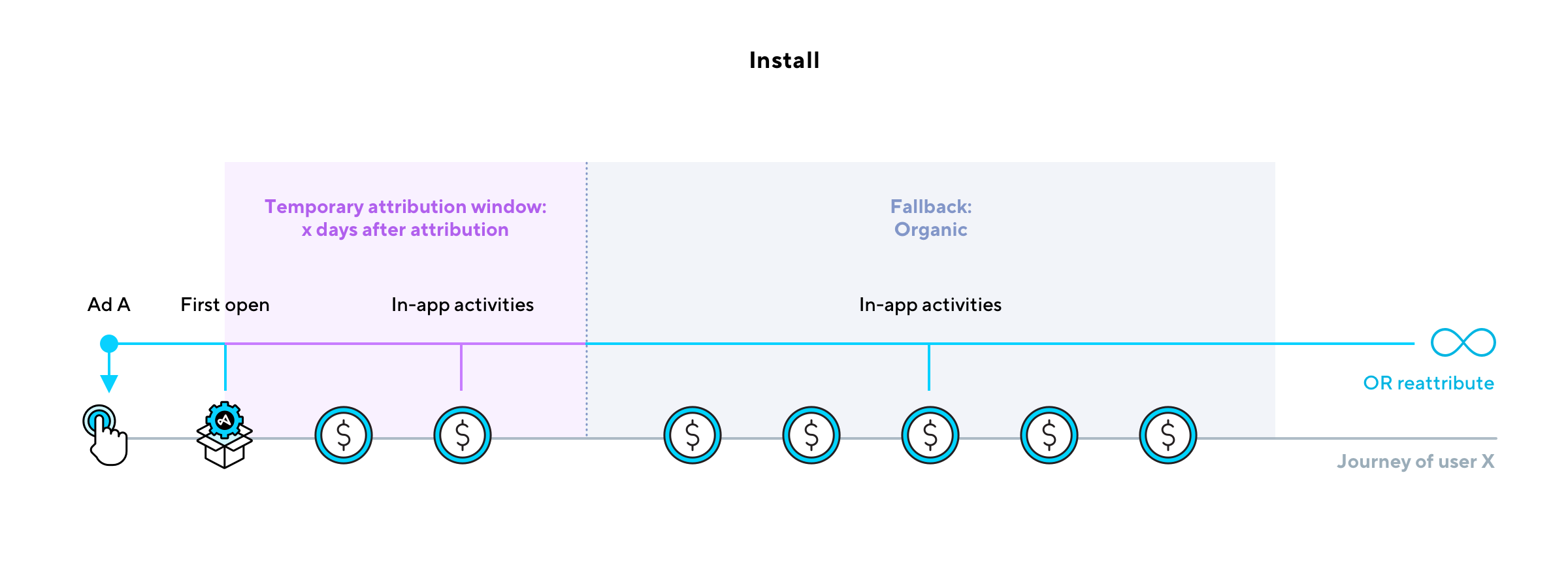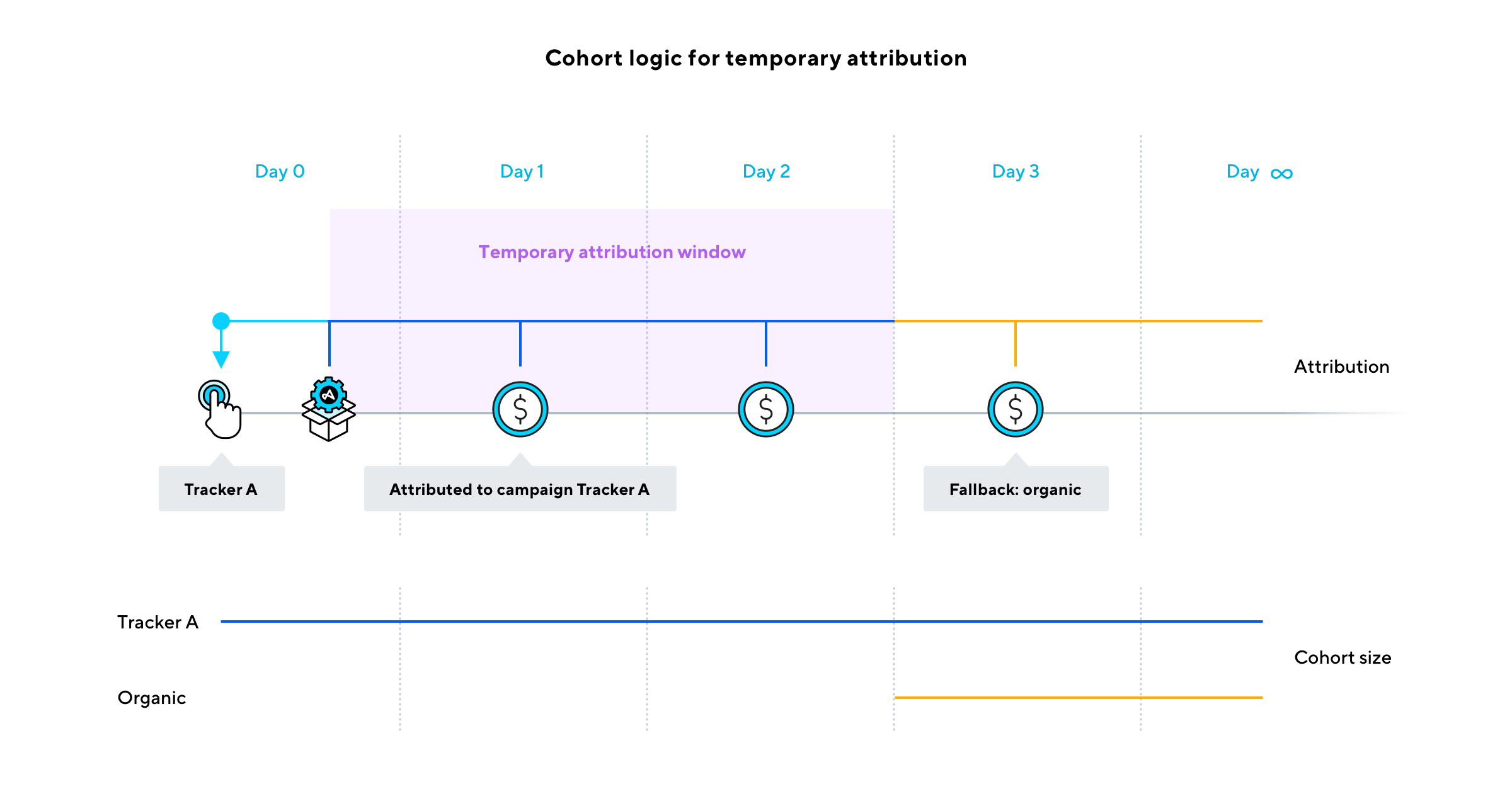Temporary attribution
Temporary attribution offers marketers and user acquisition (UA) managers a new way of measuring the effectiveness of short-term campaigns. In Adjust, you can define exactly how long a user is attributed to a source. This lets you measure your campaign performance according to your specific business needs.
Temporary attribution methodology
Attribution refers to matching two data points:
- Your app users
- Their source of install
Typically, Adjust attributes using our last-click methodology. This means that when a user engages with an ad and installs the app, all future in-app activities are credited to the ad engagement.
Temporary attribution works slightly differently. When a user engages with an ad and installs the app, there is a set time period in which Adjust attributes in-app activities to that ad engagement. Once that time expires, we attribute further in-app activities to Organic.
Temporary reattribution
Adjust reattributes users and their in-app activities to a new attribution source when they meet all of the following conditions:
- App is installed
- Inactive in the app for the defined inactivity period
- Engage with a different Adjust link from the link the install was attributed to
- Trigger an in-app session within the defined reattribution window
With temporary reattribution, you can define the period of time a user can be reattributed to the new attribution source. This means that after meeting the reattribution conditions, there is a specific time in which the user’s in-app activities are reported under the new attribution source. Once this time expires, they are reported under a fallback option: to the last eligible attribution source or to Organic.
| Term | Definition |
|---|---|
| Last eligible source of attribution | The last measured advertising source the user interacted with that met all attribution criteria. |
| Organic | Traffic that isn’t attributed to an advertising source. |
Use cases
Temporary attribution is a powerful tool for marketers looking to run short-term campaigns. It lets you specifically look at the impact of time-sensitive messaging on conversion and engagement. This applies for re-engagement campaigns, A/B testing, seasonal campaigns, and more.
Here are two examples of how temporary attribution can be used for insights into a specific marketing model.
Cohorts
You can use cohort data to accurately calculate user activity and lifetime value. However, given the difference in how temporary attribution works compared to last-click attribution, there is a small change to how cohorts are calculated.
Cohort calculation
Every time a user is reattributed to a temporary link, Adjust removes that user from the cohort size of the original link, and adds them to the cohort size of the new, temporary link. When all temporary links have expired, the user falls back to their original, non-temporary link or to organic. As they fallback, we add +1 to the cohort size of that final link, counting from the day of install.
For this reason, depending upon the time period you are looking at, you may see some fluctuation in your cohort size. This is especially important when looking at organic users.
To tell if temporary attribution has changed your cohort size, you can compare its size over a certain period to that of day 0.





